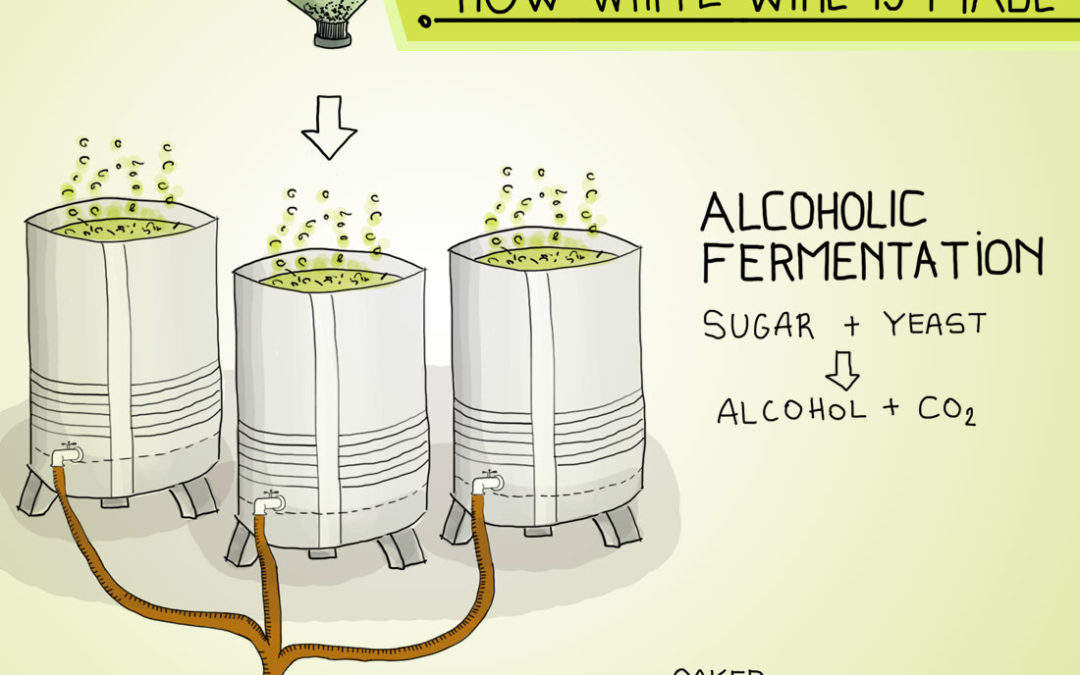The white vinification is a particular type of vinification, the complex of operations that leads to obtaining the wine from the must, obtained by pressing the grapes after the harvest. The vinification in white involves the immediate separation of the pomace and the pips from the crushed grapes. The pomace, or rather the grape skins, contain most of the substances of polyphenolic origin that are responsible for the color of the wine, while the grape seeds contain most of the tannins that are transferred to the fermenting must.
The vinification in white therefore leads to obtaining white wines without tannins or with very low tannin content. It is therefore used for the vinification of white grapes, but in some cases it is also used to obtain white wines from black grapes. The most famous case is that of Pinot Noir, vinified in white both for use in sparkling wine according to the classic method (if in purity its sparkling wines are called “blancs de noir”) that to obtain still white wines.
How white vinification takes place
The first operation, common to all types of winemaking, is the crushing of the grapes, followed by the destemming, or rather the separation of the berries from the stems. The two operations can take place simultaneously using oenological machines called crushers and destemers. This phase is followed by draining, ie from the separation of the skins from the liquid fraction of the must, limiting contact time as much as possible. The solid fraction is immediately destined for pressing to recover all the liquids and does not come into contact with the must.
The musts are then normally decanted, filtered and centrifuged to obtain the best clarity and fineness. the wine is decanted into wine vats for aging. Depending on the vinification style, the racking can be preceded by filtration to separate the yeasts (lees).
Fermentation and vinification in white
The critical points of fermentation during white winemaking are:
the contact with the air that must be avoided as much as possible in order to prevent the enzymatic oxidation of the polyphenols (polyphenol oxidase), which would produce a worsening of the organoleptic qualities of the wine (maderization).
temperature control, which cannot exceed 18-22 ° C, generally obtained by using double-walled insulated fermenters. Recall that fermentation is an exothermic reaction, therefore it produces heat, from which the need to control the temperature.
Maceration and Orange Wines
Leaving the skins and the pips to macerate for a certain period together with the musts of white grapes, we do something that comes close to red winemaking. The transfer of polyphenols and tannins is in any case limited, given their lower content in white grapes, but if the maceration is sufficiently long it leads to orange-colored wines with significant tannins. These wines are known as Orange wines.


